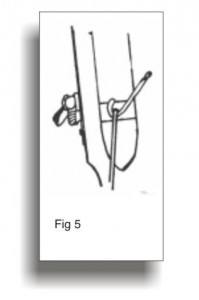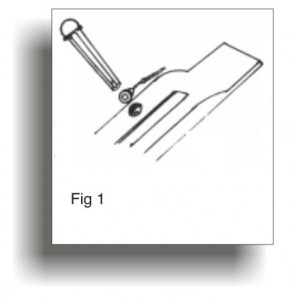Before we go any further, let’s talk about stringing the instrument. A guitar that’s not strung properly can wreak havoc all the way through the set up procedure.
Before you remove the old strings, you might want to take a close look at how the old strings are attached at both the bridge and headstock. Remove the strings and clean the headstock, fingerboard, and bridge thoroughly.
For Steel String Acoustics: Place the ball end into the proper hole for that string and insert the bridge pin into the hole with the grove of the bridge pin against the string. (See Fig. #1) (Note: some bridge pins don’t have groves.)
For Electrics: There are several different ways to attach ball end (and cut off end strings for some electrics with tremolo bars), too many to try and cover here, so you must look closely at how the old strings are attached and replace them accordingly.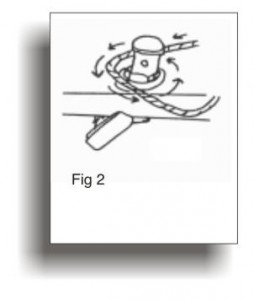
Now… bring the string up alongside the roller of the tuner for that string. (See Fig. #2). Wrap the string around the roller two or three times for the thin strings and one or two times for the heavier wound strings. Too many windings on the roller can cause tuning and slippage problems, and too few can cause strings to break at the roller.
Wrap the strings from the inside to the outside of the headstock for proper rotation of the tuner. (See Fig. #2) Then stick the string through the hole and bend it straight up away from the headstock and clip the excess string. Tune to pitch, give the string a few good tugs and retune. You should be ready to go on with your setup now.
Remember, if you change string gauge you will probably need to readjust the truss rod and/or the bridge (if adjustable) to compensate for the difference in tension. Because of this, it is best to decide on a gauge, set-up the guitar for that gauge and stick with it.
For Classic Guitars: If your nylon strings have ball ends, just run the string through the hole in the bridge and the ball will hold it in place. But if your strings are straight ends (most common), you must tie them to the bridge.
First put the string through the proper hole in the bridge and leave about 3 inches out the back side. Now bring this 3 inch part of the string up and under the rest of the string (See Fig. #3). 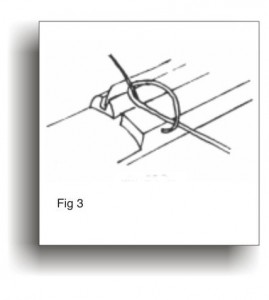
Now wrap the short end around itself another 2 times and pull the long part of the string to tighten this knot. (See Fig. #4)
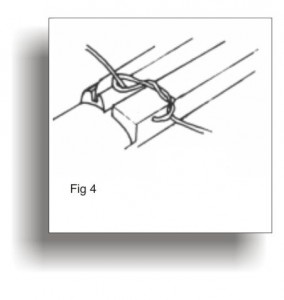
Classics at the headstock: Because nylon strings slip so much, you must wind the string over itself on the rollers of the tuner. To do this, stick the string through the hole in the roller and then bring the string back over the roller and slide it under the section of string that is going through the hole, then turn the tuner tightening the string on itself. (See Fig. #5)
